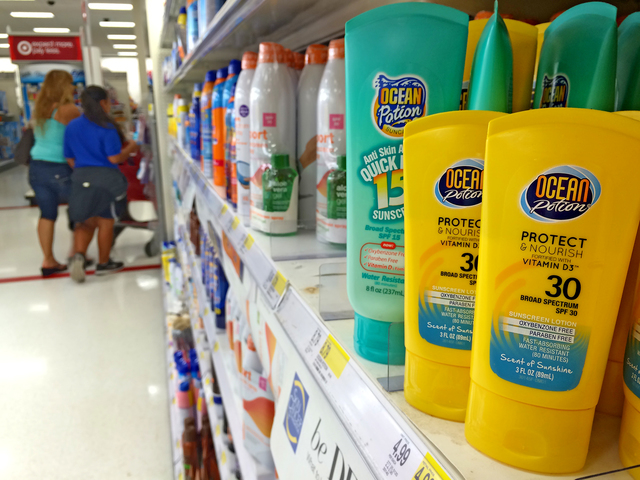KAILUA-KONA — Sunscreen is more or less a necessity in Hawaii, but depending on its chemical composition some types might harm coral reef environments as much as they help prevent sunburns and skin cancer. ADVERTISING KAILUA-KONA — Sunscreen is more
KAILUA-KONA — Sunscreen is more or less a necessity in Hawaii, but depending on its chemical composition some types might harm coral reef environments as much as they help prevent sunburns and skin cancer.
The Ironman competition, which takes place during a crucial coral larval settlement period that occurs after spawning events in late summer, brings with it an economic boon to West Hawaii as athletes, families and spectators flock to the Big Island from around the globe.
In anticipation of the event, several environmental entities teamed up and drafted a widely disseminated letter in an attempt get the word out about coral-safe sunscreen options — an effort they hope will help negate human contribution to coral bleaching.
“It’s all about awareness,” said Megan Lamson, vice president of the Hawaii Wildlife Fund and co-author of the letter. “It’s newer news, and people aren’t necessarily aware of it.”
A study published by marine scientists from throughout the country in October 2015 confirmed the threat oxybenzone, a chemical found in more than 3,500 sunscreen products worldwide, poses to coral.
Among the report’s findings were that the chemical induces coral bleaching, damages coral DNA and serves as an endocrine disruptor, which leads to the deformation and death of planula, or juvenile coral.
Bruce Anderson, state Division of Aquatic Resources administrator, said earlier this month that as much as 50 percent of West Hawaii’s corals bleached and died in the most recent bleaching event.
Several factors contributed to the large-scale bleaching, but pollution from sunscreen that washes off when swimmers hit the water or contaminates reefs as a result of wastewater discharge is a primary culprit.
“(Sunscreen pollution) is really very preventable, so it’s something we can stop very easily just by a quick change in behavior,” Lamson said.
After careful consideration, the Division of Aquatic Resources — a branch of the state Department of Land and Natural Resources — publicly recommended during the IUCN World Conservation Congress, which was hosted on Oahu earlier this month, a transition to sunscreens without oxybenzone.
“There are a number of chemicals that scientists have identified as potentially affecting coral reefs, but oxybenzone seems to be the biggest one,” said Dan Dennison, spokesperson for the DLNR. “Until there is more scientific evidence available, that’s the start.”
A larger effort to root out oxybenzone pollution will be undertaken beginning with the state’s next legislative session. Sen. Will Espero, who represents Hawaii’s 19th District on Oahu, will introduce a bill banning the sale of sunscreens containing the chemical throughout the state.
Ironman, too, is trying to do its part. Diana Bertsch, vice president of the event, said several concerns were voiced by community members about the issue following last year’s race.
In response, Ironman implemented awareness procedures prior to the Honu Ironman 70.3 Hawaii event earlier this year. The same procedures are preceding the race coming up in October.
“We send out a newsletter called IRONStuff, and there is actually a one-page flier we include in it about protecting the coral reefs and using reef-safe sunscreen,” Bertsch said.
The information also is posted on the organization’s website.
“Anything we can do to alleviate those stressors is helpful,” Lamson said. “It’s not going to solve everything, but at least we’re not adding to the long list of stressors.”
Email Max Dible at mdible@westhawaiitoday.com.



